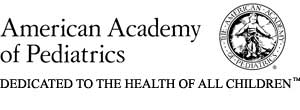Your
child is almost certain to have at least one nosebleed, and probably many,
during these early years. Some preschoolers have several a week. This is
neither abnormal nor dangerous, but it can be very frightening. If blood flows
down from the back of the nose into the mouth and throat, your child may
swallow a great deal of it, which in turn may cause vomiting.
If your pediatrician sees your child during a nosebleed, she will probably
repeat the nose-holding routine. (If the nose is full of blood clots, it may
be suctioned clean first.) The doctor may use nose drops that constrict the
blood vessels, or put cotton soaked with medication inside the child's nose.
The doctor may decide to examine your child's nose with a special light to
find the origin of the bleeding. If a blood vessel is found to be causing the
problem, the doctor will touch that point with a chemical substance (silver
nitrate) to stop the bleeding.
If the bleeding still cannot be controlled, the nose may have to be packed
with gauze. Your child won't like this, it is uncomfortable, but it may be
necessary. The packing is generally left in for at least 24 hours.
If your doctor thinks it's necessary to explore the cause of the bleeding
further or to make sure your child didn't lose too much blood, a blood test
will be ordered. It's extremely rare that a child will need a blood
transfusion to replace lost blood.
Causes of Nosebleeds
There are many causes of nosebleeds, most of which aren't serious.
Beginning with the most common, they include:
- Colds and allergies: A cold or allergy causes swelling and
irritation inside the nose and may lead to spontaneous bleeding.
- Trauma: A child can get a nosebleed from picking his nose, or
putting something into it, or just blowing it too hard. It can occur if he
is hit in the nose by a ball or other object or falls and hits his nose.
- Low humidity or irritating fumes: If your house is very dry, or
if you live in a dry climate, the lining of your child's nose may dry out,
making it more likely to bleed. If he is frequently exposed to toxic fumes
(fortunately, an unusual occurrence), they may cause nosebleeds.
- Anatomical problems: Any abnormal structure inside the nose can
lead to crusting and bleeding.
- Abnormal growths: Any abnormal tissue growing in the nose may
cause bleeding. Although most of these growths (usually polyps) are benign
(not cancerous), they should still be treated promptly.
- Abnormal blood clotting: Anything that interferes with blood
clotting can lead to nosebleeds. Medications, even common ones like aspirin,
can alter the blood-clotting mechanism just enough to cause bleeding. Blood
diseases, such as hemophilia, also can provoke nosebleeds.
- Chronic illness: Any child with a long-term illness, or who may
require extra oxygen or other medication that can dry out or affect the
lining of the nose, is likely to have nosebleeds

